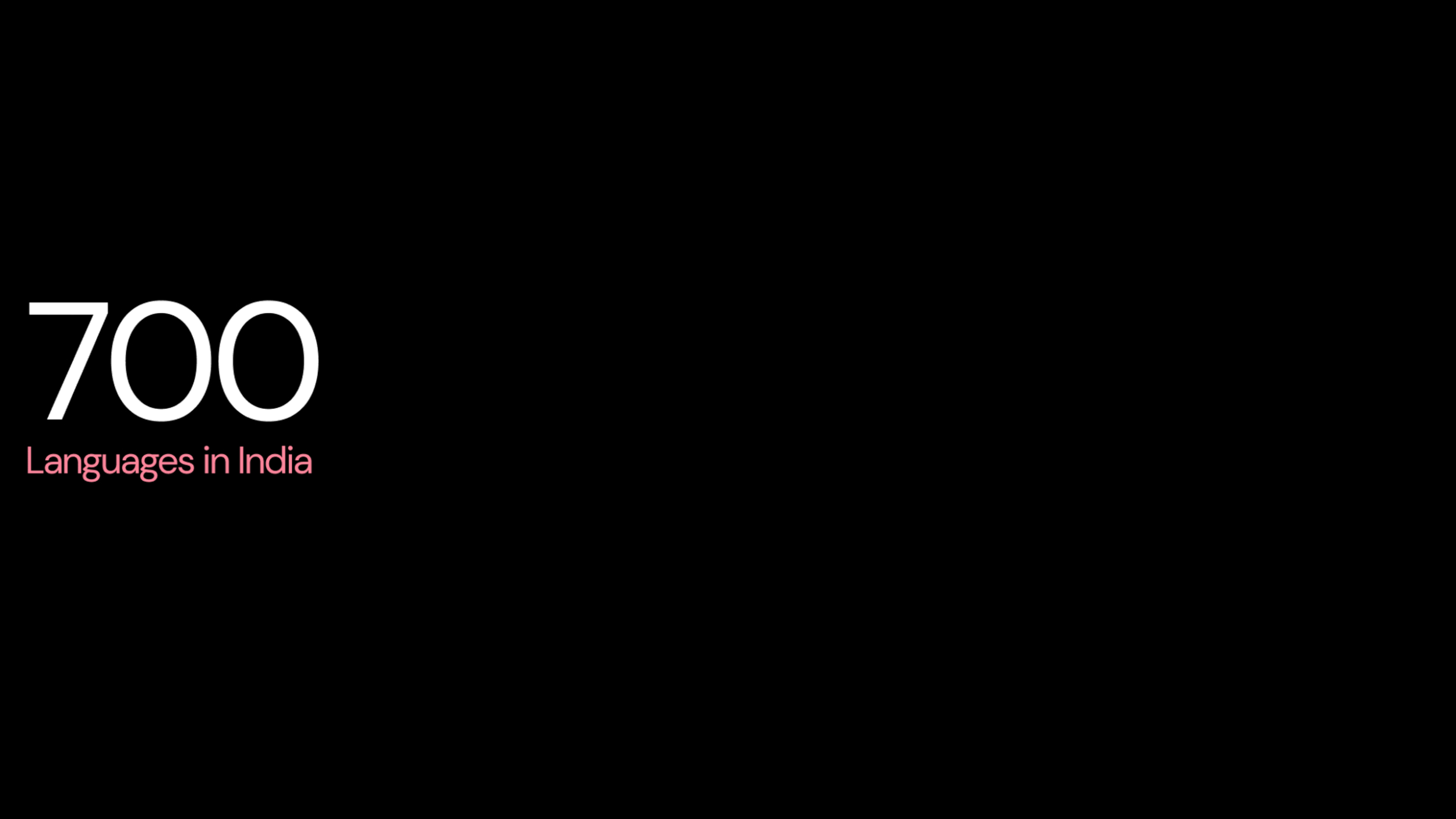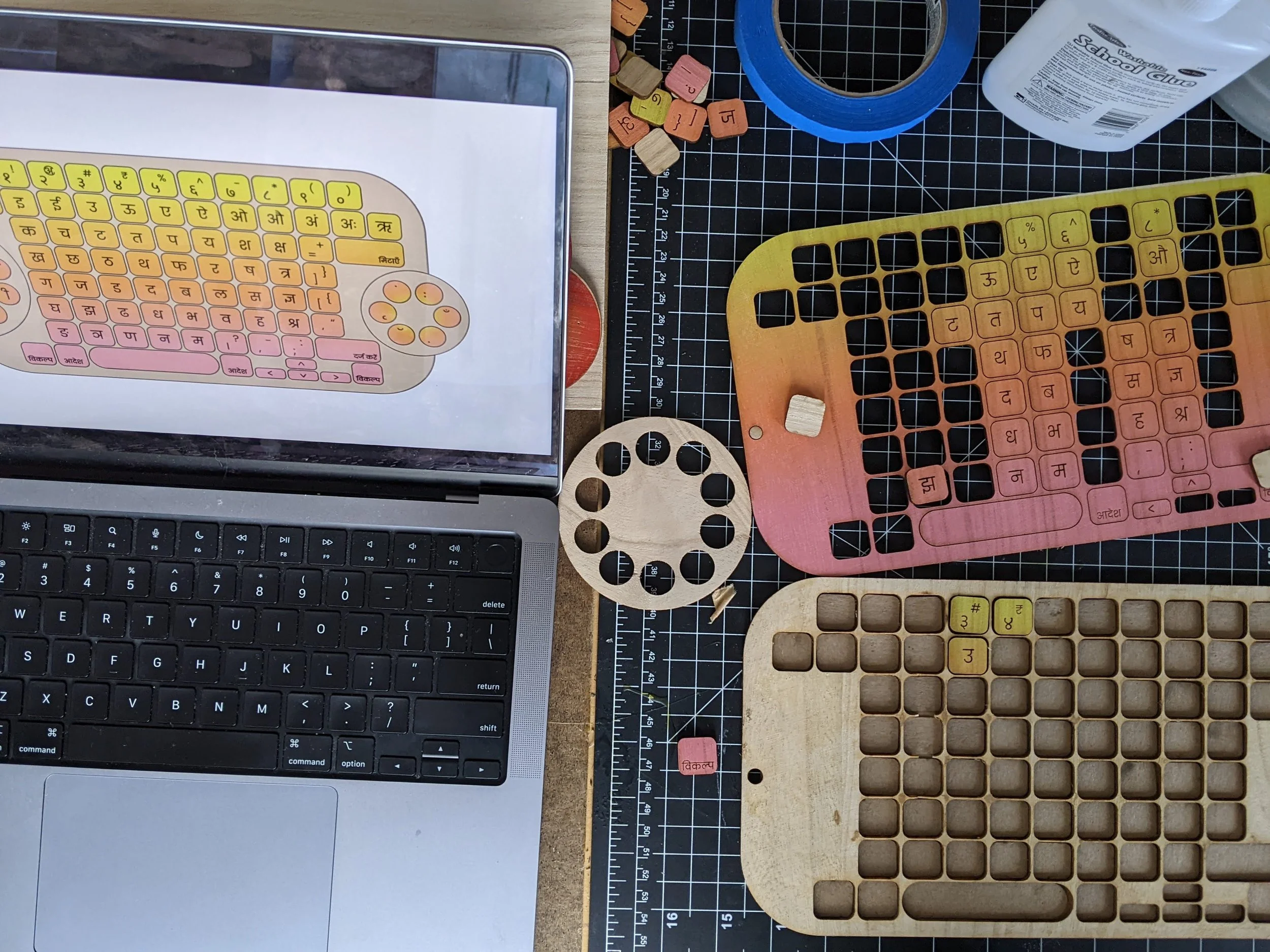Lipi: A Devanagari Keyboard for Typing in Hindi
Lipi is a speculative Devanagari keyboard that reimagines the typing experience beyond QWERTY. The project, which addresses the challenges of typing in Hindi, was created by Charvi Shrimali for her thesis, How India Looks: Localizing Design Tools for a Billion People.
"Honestly, typing in Hindi is painful. It slows me down and takes hours to do something that could be done in 20 minutes in English." - C. Sah, Visual Designer, Kota, India
"India has over 700 languages, each with their own dialects and often with their own unique scripts," Charvi shares. "Google Font, one of the largest free font libraries in the world, only represents nine of these languages. These nine languages collectively have only 56 font options between them. Compare this to a staggering archive of over 1400 Latin fonts."
"This disparity isn't because there aren't enough speakers," Charvi explains. "For example, my mother tongue, Hindi, with its many regional variations, is the third most spoken language in the world, with over 700 million speakers. That's twice the population of the US."
The lack of representation can leave a language even as popular as Hindi marginalized.
"Even before we start talking about designing a font, typing in Hindi poses a challenge," Charvi says. A complicated language with an alphabet comprising 52 letters, a system of diacritics, and conjunct consonants, Hindi has been retrofitted into a qwerty keyboard that was designed for a language with half the number of letters.
This forces each key to perform multiple tasks, impeding both the user's intelligence and speed and making them deprioritize designing in any other language but English. So Charvi wondered, "Instead of optimizing design within the existing paradigms, what if we broke away from it?"
To learn more about Charvi’s work, take a look at the other thesis projects that make up How India Looks: Localizing Design Tools for a Billion People. Find more of her design work at charvishrimali.com.



